Question
Who among the following sits opposite to E?
Read the following information carefully and answer the given questions: Ten persons A, B, C, D, E, F, G, H, I and J are sitting in two parallel rows containing six seats in each row. Ten persons are sitting on ten seats and there are two vacant seats. Each seat in a row faces another seat of the other row. In Row-1, all are facing north direction and in Row-2, all are facing south direction. In each row at least one vacant seat. Each of them likes different types of colours viz. Red, Yellow, Green, Blue, Pink, Orange, Brown, Cream, White and Black, but not necessarily in the same order. The ones who like Cream and Green sit opposite to each other. The ones who like Black and Red sit diagonally opposite to each other. The ones who like White and Blue sit opposite to each other. H sits second to the right of D, who sits opposite to the one who like Yellow. The one who likes Cream sits second to the left of the one who likes Black. E sits third to the left of the one who likes White. The one who likes Orange sits immediate left of D. J sits second to the right of F and does not like Yellow. G sits second to the left of vacant seat of Row-2. I sits opposite to the one who is an immediate neighbour of C. There are two persons sit between the ones who like Yellow and Pink, who sits at one of the extreme ends. The one who likes Black sits at one of the extreme ends. Only one person sits between A and I, who is not an immediate neighbour of D.Solution
There are two persons sit between the ones who like Yellow and Pink, who sits at one of the extreme ends. From these conditions we have four possible cases. H sits second to the right of D, who sits opposite to the one who like Yellow. The one who likes Orange sits immediate left of D. 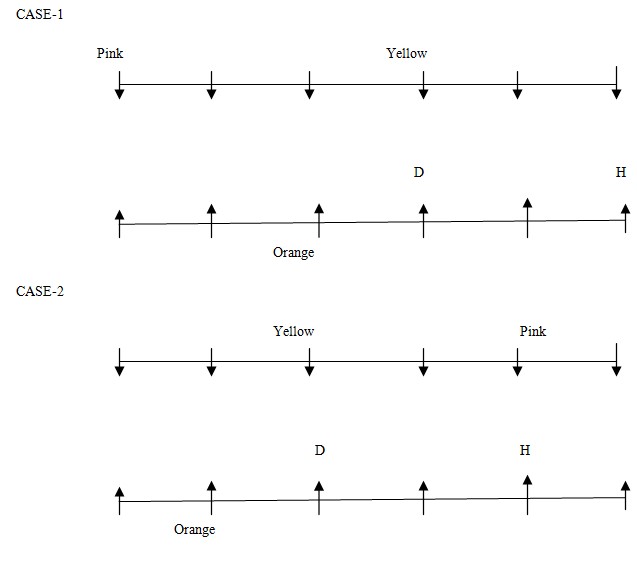
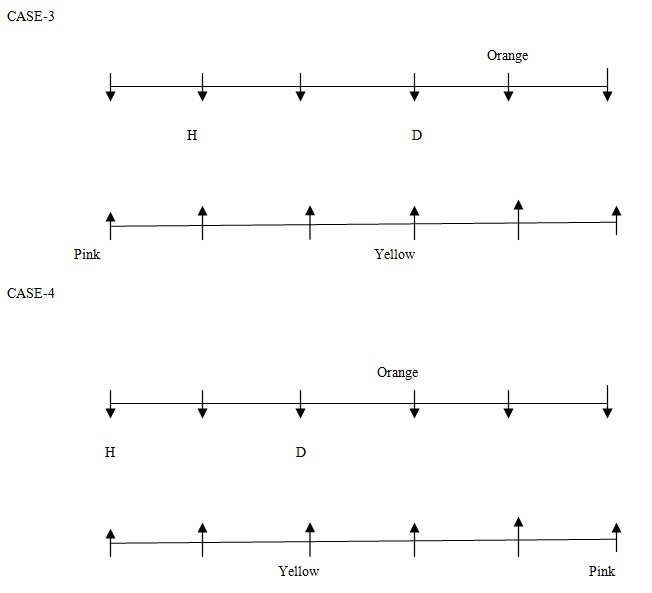 The one who likes Black sits at one of the extreme ends. The one who likes Cream sits second to the left of the one who likes Black. The ones who like Black and Red sit diagonally opposite to each other. By these conditions case 1 and case 4 are cancelled. The ones who like Cream and Green sit opposite to each other. So new arrangement will be -
The one who likes Black sits at one of the extreme ends. The one who likes Cream sits second to the left of the one who likes Black. The ones who like Black and Red sit diagonally opposite to each other. By these conditions case 1 and case 4 are cancelled. The ones who like Cream and Green sit opposite to each other. So new arrangement will be - 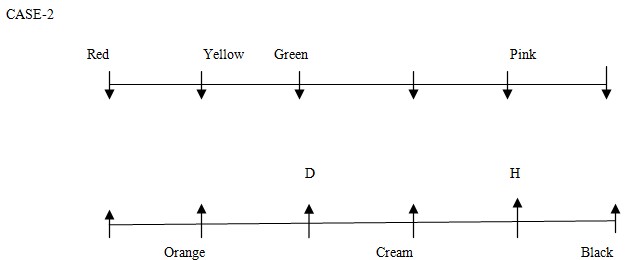
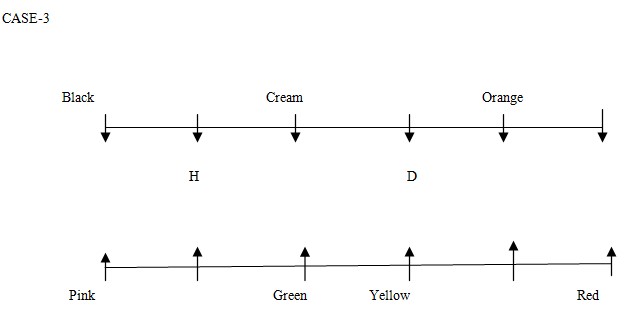 The ones who like White and Blue sit opposite to each other. E sits third to the left of the one who likes White. G sits second to the left of vacant seat of Row-2. In Row2, all are facing south direction. By these conditions case- 3 is cancelled. J sits second to the right of F and does not like Yellow. I sits opposite to the one who is an immediate neighbour of C. Only one person sits between A and I, who is not an immediate neighbour of D. So final arrangement will be -
The ones who like White and Blue sit opposite to each other. E sits third to the left of the one who likes White. G sits second to the left of vacant seat of Row-2. In Row2, all are facing south direction. By these conditions case- 3 is cancelled. J sits second to the right of F and does not like Yellow. I sits opposite to the one who is an immediate neighbour of C. Only one person sits between A and I, who is not an immediate neighbour of D. So final arrangement will be - 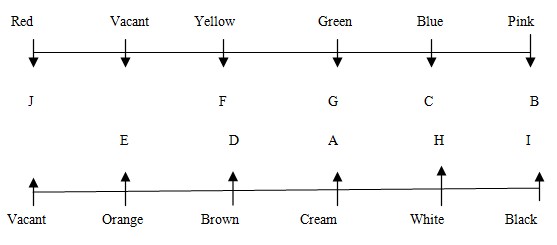
What is the Capital of Switzerland?
Match the following:
In what year was the National Rural Employment Guarantee Act (NREGA) enacted?
____________ was re-appointed as the Prasar Bharati Chairman.
Seoul is the capital of which country?
By what instrument or device is relative humidity typically measured?
Green Park Stadium is situated in which Indian city?
Maize – Potato – Wheat – Green gram is an example of
Which state banned selling of tobacco at shops selling FMCG (Fast Moving Consumer Goods) items?
Name the state which recently approved 1% reservation for orphans in government jobs:
Relevant for Exams:


